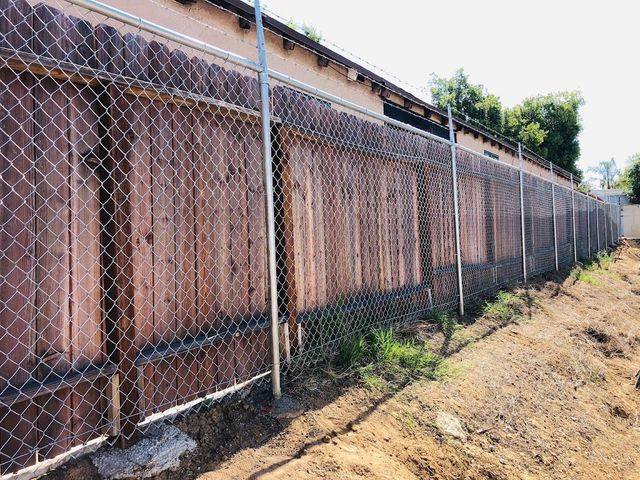All Categories
Featured
Choosing the appropriate fence for your home entails careful factor to consider of capability, visual appeals, budget plan, and long-lasting upkeep. Whether you're seeking to boost personal privacy, boost curb charm, or protect your home, recognizing your alternatives will help you make an educated decision. Below's an extensive overview to choosing the optimal fencing for your demands.
![]()
Privacy: Tall, solid fences like wood or plastic are ideal for obstructing exposure. Protection: Strong materials like light weight aluminum or steel offer a safe and secure barrier. Visual Charm: Ornamental fencings, such as wrought iron or picket styles, improve visual allure. Containment: For youngsters or pet dogs, fences like chain-link or plastic are practical choices. Noise Decrease: Dense materials, such as composite secure fencing, can aid wet noise. Clearly recognizing your objectives will certainly limit your choices significantly.
Wood: Supplies a natural, traditional look and is extremely adjustable however needs regular maintenance. Vinyl: Reduced upkeep and resilient however might have a higher preliminary price. Aluminum: Lightweight, rust-resistant, and sophisticated, though not excellent for privacy. Chain-Link: Useful and inexpensive yet lacks aesthetic allure and personal privacy. Wrought Iron: Decorative and resilient yet can be expensive and requires maintenance. Compound: A blend of timber and plastic, offering longevity with a wood-like look. Choose a product that lines up with your concerns and complements your residential or commercial property's style.
![]()
Low Maintenance: Plastic, aluminum, and composite fences require periodic cleansing. Modest Maintenance: Wrought iron fencings may require painting to stop rust. High Maintenance: Timber fencings require routine discoloration, sealing, or painting. Think about how much time and effort you're prepared to buy maintenance throughout the years.
A picket fence suits a traditional home. A modern-day building might look best with sleek, minimalist fence materials like vinyl or metal. A country home might take advantage of rustic timber or split-rail fencing. 7. Look For Expert Recommendations. Consulting a fencing specialist can aid ensure you select the ideal material, design, and installment process for your home. Experts can analyze elements like dirt slope, type, and climate to advise the most suitable alternatives.
Conclusion. Choosing the best fencing for your residential or commercial property involves stabilizing performance, visual appeals, and expense. Start by recognizing your objectives, exploring materials, and thinking about upkeep and budget plan. With thoughtful preparation and specialist guidance, you can find the ideal fencing to improve your home's value, security, and appeal for years to come.
- Specify Your Purpose. The primary step in picking a fence is identifying why you need one. Common functions consist of:

Privacy: Tall, solid fences like wood or plastic are ideal for obstructing exposure. Protection: Strong materials like light weight aluminum or steel offer a safe and secure barrier. Visual Charm: Ornamental fencings, such as wrought iron or picket styles, improve visual allure. Containment: For youngsters or pet dogs, fences like chain-link or plastic are practical choices. Noise Decrease: Dense materials, such as composite secure fencing, can aid wet noise. Clearly recognizing your objectives will certainly limit your choices significantly.
- Consider Material Options. Each fence product has distinct qualities, benefits, and disadvantages. Right here's a quick review:
Wood: Supplies a natural, traditional look and is extremely adjustable however needs regular maintenance. Vinyl: Reduced upkeep and resilient however might have a higher preliminary price. Aluminum: Lightweight, rust-resistant, and sophisticated, though not excellent for privacy. Chain-Link: Useful and inexpensive yet lacks aesthetic allure and personal privacy. Wrought Iron: Decorative and resilient yet can be expensive and requires maintenance. Compound: A blend of timber and plastic, offering longevity with a wood-like look. Choose a product that lines up with your concerns and complements your residential or commercial property's style.

- Element in Maintenance Needs. Different secure fencing materials require varying levels of treatment:
Low Maintenance: Plastic, aluminum, and composite fences require periodic cleansing. Modest Maintenance: Wrought iron fencings may require painting to stop rust. High Maintenance: Timber fencings require routine discoloration, sealing, or painting. Think about how much time and effort you're prepared to buy maintenance throughout the years.
- Evaluate Your Budget plan. Fence prices include both products and installment. While chain-link and wood are generally more budget-friendly upfront, products like plastic and aluminum might conserve money in the future as a result of lowered maintenance needs. Furthermore, consider potential upgrades, such as gates or attractive elements, when establishing your budget plan.
- Check Neighborhood Regulations and HOA Policies. Prior to finalizing your selection, speak with local zoning legislations and home owner association (HOA) laws. Some locations have height limitations, product constraints, or design guidelines that might influence your decision.
- Suit the Fence to Your Building's Design. The design of your fence must match your home and landscape. For instance:
A picket fence suits a traditional home. A modern-day building might look best with sleek, minimalist fence materials like vinyl or metal. A country home might take advantage of rustic timber or split-rail fencing. 7. Look For Expert Recommendations. Consulting a fencing specialist can aid ensure you select the ideal material, design, and installment process for your home. Experts can analyze elements like dirt slope, type, and climate to advise the most suitable alternatives.
Conclusion. Choosing the best fencing for your residential or commercial property involves stabilizing performance, visual appeals, and expense. Start by recognizing your objectives, exploring materials, and thinking about upkeep and budget plan. With thoughtful preparation and specialist guidance, you can find the ideal fencing to improve your home's value, security, and appeal for years to come.
Latest Posts
Design and Performance Combined
Published Apr 21, 25
1 min read
Design and Efficiency Combined
Published Apr 21, 25
1 min read
Design and Efficiency Combined
Published Apr 21, 25
1 min read